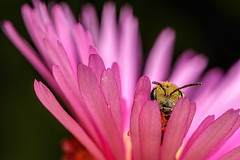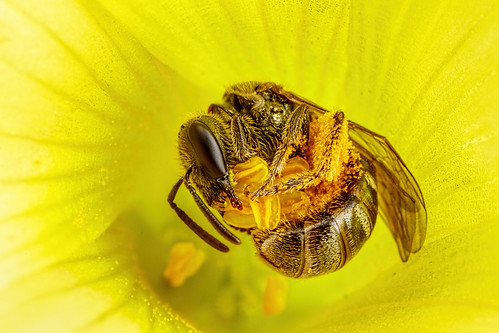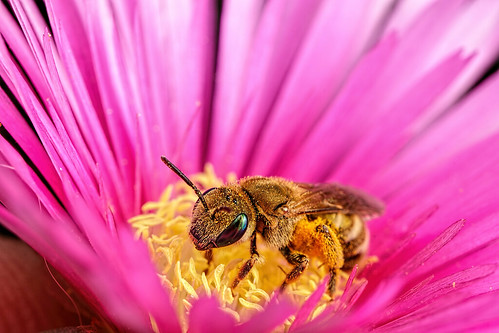Monday, May 25, 2015
Bee-Havior Part 2
When I first got into macro photography I ran into a lot of bad advice, and one misconception that I still see people buying into even today is that you need long glass to shoot skittish or active subjects. Now I’m not saying that’s completely false, there are some critters that you may need a lens in the 150mm plus range to photograph. But that really only holds true if you’re using natural light, and the subject is very skittish. But if you’re using a flash as your primary light source then you need to get your diffusers close to the subject to get really well diffused light, and if your diffusers are close then the working distance of the lens is kinda mute. Add to that the need for a completely calm day with little or no wind when working with long glass and you’ll find yourself limited to what you can do, and when you can do it, when using a big lens.
So what does all of that have to do with shooting bees? Well, what if I told you that one of my “secrets” to taking images of them above life size is to use a short focal length lens and go looking for them on windy days. In fact the windier the day the easier it is to get close to them, because they can’t tell the difference in the vibration caused by the breeze and me grabbing onto the stem of the flower that they are on. Once I have that stem between my left index finger and thumb I rest the lens on that same hand. Now the subject and the camera are on the same “platform” and I have almost full control over the motion in the scene, and I can turn the flower and twist the camera to make the most of what little depth of field there is in a single frame macro image. If I’m really lucky then the skies are partly cloudy and the critters are used to the occasional drop in light, so they’re not concerned when I cast a shadow over them. So although it sounds really counterintuitive it’s sometimes best to use a short focal length lens and go shooting on a windy day :)
I also like to go shooting active subjects early in the morning for two reasons. The first is that they are still trying to get moving and they may just be active and not hyperactive. The other is that they are just like us in that they really need breakfast. So the hungrier they are the more likely they’ll put up with me getting close to them. Later in the day, when there’re not so concerned with eating, it’s going to be more difficult.
Until next time happy shooting :)
Subscribe to:
Post Comments (Atom)




No comments:
Post a Comment